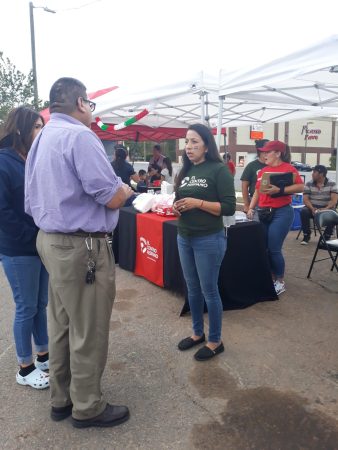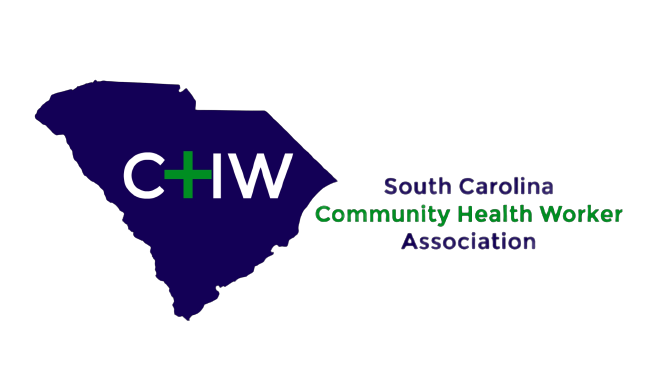During the pandemic, community health care workers provided a bridge to care
 During the pandemic,
During the pandemic,
Community Health Workers provided a bridge to care for marginalized populations. Now what?
By Isabel Lewis
When COVID-19 cases put immense pressure on North Carolina health care systems, the state turned to community health workers to strengthen public health initiatives to slow the spread of the virus.
Health leaders in the state say community health workers played a crucial role in facilitating the COVID-19 vaccine rollout, offered guidance to parents on navigating virtual schooling for their children, assisted people in accessing food and more.
Now that COVID-19 is no longer classified a public health emergency, the federal funding that helped scale up this workforce is all but depleted, and many community health workers are uncertain about what the future holds.
Rubi Morales is one of those community health workers, also known as a “promotores de salud.” She works for El Centro Hispano, a 30-year-old Triangle-based organization.
When Morales first got involved in community health work in early 2020, she said her focus revolved around educating others about nutrition, monitoring blood pressure and preventing diabetes.
Then the COVID-19 pandemic was declared, and the priorities of community health workers shifted. In addition to physical ailments caused by the virus, there were also widespread concerns in North Carolina about job loss and food insecurity. Morales got to work, knocking on doors in Chapel Hill, educating people about the pandemic and addressing their concerns.
To stay up to date on the ever-evolving virus and the emerging science around it, Morales attended weekly training sessions available to community health workers across the state. According to Morales, the training opportunities are no longer provided, but she is advocating for continued access to free training so that she and her colleagues can stay better informed.

Although the health care systems are now better prepared to deal with COVID-19, relieving some of the urgency of the need for community health workers, Morales believes there still is extensive work to be done. Aging and chronic diseases continue to affect people, and access to health care remains crucial. The pandemic didn’t eradicate those issues.
Morales and her El Centro colleagues visit the North Carolina General Assembly three times a month to encourage legislators to keep funding community health workers, even as the state moves beyond the COVID-19 crisis. She believes investing in community health workers is essential to helping North Carolina maintain good health.
Some state officials have expressed similar sentiments.
Earlier this year, the state Department of Health and Human Services proposed a plan to use community health workers to help deliver services to children and adults enrolled in the state’s Medicaid system, with the intent of having them help connect people in need to safety-net organizations. They can also aid with linking community members to primary and preventative health care.
If implemented, North Carolina could see upwards of 350 new community health workers employed by this strategy, according to Honey Estrada, president of the North Carolina Community Health Worker Association. Estrada said this is “one step in the right direction.”
The role of community health workers
“A community health worker is more than a job,” Estrada said. “It’s who we are.”
The definition of a community health worker, often referred to as a CHW, is “a front-line public health worker who is a trusted member of and/or has an unusually close understanding of the community served,” according to the American Public Health Association. They are an instrumental part of health care systems in Latin America, often providing the necessary bridge for marginalized populations, and they are becoming more prominent in many parts of the United States — particularly in Hispanic communities.
What sets them apart from other health care workers is how they connect individuals with resources beyond traditional clinical settings. Many work in low-income neighborhoods and regions where people are fearful of engaging with the health care system.
“We’ve got CHWs working in a lot of different places,” Estrada said. Some work directly with community members, while others operate at the policy and advocacy level.
CHWs are employed by numerous agencies — including county health departments, hospitals and community-based organizations such as El Centro. Others volunteer their services. Due to the wide range of employers, the pay for community health workers varies significantly across the state.
In an interview with NC Health News, Gloria Council, a community health worker based in Mecklenburg County, talked about some of her experiences on the job.
In her four years with Novant Health, Council estimates she has worked with about 2,500 patients. Through her job, Council assumes multiple responsibilities. She identifies herself as an advocate for her patients — advocating not only for their health but also for affordable housing and safety in Mecklenburg County. She also is an empathetic and reliable listener.

Her job has not been without challenges, though. When COVID-19 hit, Council said, “I was not ready for it.” Now, even though the threat of the pandemic is subsiding, Council still faces difficulties.
Earlier this year, Novant Health laid off several employees, including some executives; among them was Council’s boss.
“That was the most heartbreaking thing,” Council said. Novant Health did not respond to questions from NC Health News about how many people lost their jobs.
The dwindling funding has led to wider spread layoffs.
“Public health funding in general, but certainly community health worker funding, is a boom and bust cycle,” said Taylor Norris, a North Carolina community health worker advocate for Partners in Health.
To address this issue, Norris said, “we need to find a way for CHWs to be embedded into our health care community systems.” This means more employers hiring community health workers. He believes this can curb the fluctuations in funding.
John Resendes, the program manager at the N.C. Department of Health and Human Services Office of Rural Health, told NC Health News in an interview: “I think it behooves [employers] to start to move in a direction where they’re hiring more folks that hopefully are CHWs or acting like CHWs.”
Community health workers can effectively engage “a population that is very challenging [for most of the health care system] to reach,” he added.
NC DHHS is working with community health workers across the state to develop a plan to ensure that there are reliable job opportunities and funding for the profession.
Alison Owen, deputy director of the NC DHHS Office of Rural Health, said the department is “going back to foundational work that we had begun when COVID hit.”
Community health worker initiative
Although community health workers have been a part of care delivery systems around the globe for decades, it has only been in the past two decades that the United States began to officially acknowledge their contributions.
In 2007, the U.S. Department of Health and Human Services and Services Administration Bureau of Health Professions released the Community Health Worker National Workforce Study. The study acknowledged community health workers as a “component of cost-effective strategies addressing the health care needs of underserved communities.”
Efforts to address the needs of community health workers gained momentum in this country after that.
In 2014, NC DHHS assessed the needs of community health workers with the NC Community Health Worker Initiative.
The goal was to formally recognize the contributions community health workers had been making throughout the state to bridge the gap between communities and the health care system, according to Owen.
Before the initiatives at the state and national levels, many CHWs encountered barriers to getting their patients the treatments they needed. Others in the health care system were unfamiliar with the role and responsibilities of a community health worker.
In 2018, the NC DHHS published a report with recommendations for the CHW workforce. One objective was to create a standardized training curriculum.
“[Community health workers] wanted to be certified. They wanted to have some sort of license or certification to keep everybody’s name the same, their training the same and have some sort of uniform workforce,” Resendes said. The perfect place to have the uniform training was at community colleges, he added, because the campuses are more accessible to many across the state with lower tuition costs and classes geared toward specific training efforts.
There are 10 community colleges where CHWs can become certified, according to the North Carolina Community Health Worker Association website. Certification is not mandatory.
Not long after the rollout of the standardized training for CHWs began to take off in North Carolina, something unexpected happened.
Rising and receding funding
“COVID hit, and our department got flooded with funding,” Resendes said.
According to Resendes, during the pandemic, DHHS received $56.6 million in funding from the Centers for Disease Control and Prevention to support North Carolina community health workers through this time. That made it possible for the state to hire and train roughly 600 CHWs, he said. But, according to Resendes, this funding dried up in December 2022.
The CDC awarded the state a $9 million grant in 2021 that was designated for the expansion of community health workers over a three-year period. This funding was directed at the state to strengthen the CHW workforce statewide and was not exclusively tied to COVID-related expenses.
The $9 million is expected to run out at the end of this year, which is one reason there’s a scramble to identify the next funding source.
Uncertainty over what comes next
The pandemic showed that community health workers are a formidable force in being a bridge to health care for many across the state — especially people who often lack the insurance, finances or transportation to have easier access to providers.
In North Carolina and across the United States, community health workers have garnered praise for their contributions and been recognized for their role in reducing health care costs.
For this kind of work to continue, though, funding is imperative.
“I know the state as a whole, we are committed to this work, but we have not identified what that sustainable payment is going to look like yet,” Estrada said.
This article first appeared on North Carolina Health News and is republished here under a Creative Commons license.![]()
